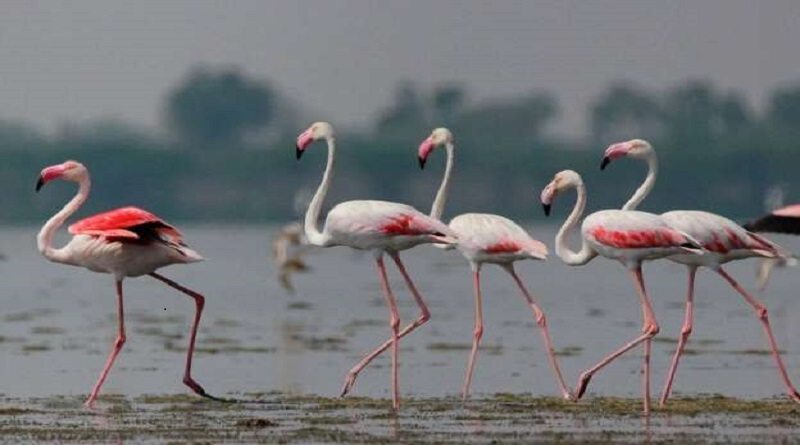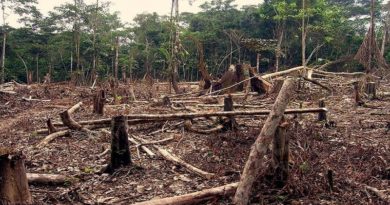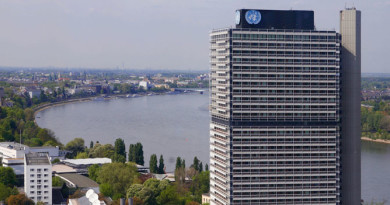CMS scientific body adopts work programme to address growing threats to migratory species of wild animals
Following two weeks of global meetings held entirely on-line, the scientific body of the Convention on the Conservation of Migratory Species of Wild Animals (CMS) agreed on a wide-ranging series of actions to address growing threats to migratory species.
Among the key outcomes, the Committee agreed:
- To create an expert working group on migratory species and health, including zoonotic diseases which have been linked to the exploitation of wild animals and destruction of natural habitat. The new Working Group on Migratory Species and Health will engage with the UN’s One Health initiative and will provide guidance to countries on matters relating to migratory species, health and disease, including on topics such as pathogen spillover, issues related to health of migratory species, and ecosystem health.
- To establish a multi-stakeholder working group, including representatives of governments, the private sector, financial institutions and non-governmental organizations (NGOs), to address the significant risks to migratory species from linear infrastructure. Globally, at least 25 million kilometers of new roads are projected to be developed by 2050, a 60 per cent increase from 2010. An additional 335,000 kilometers of rail tracks are projected to be built over the next 40 years. The new working group will address infrastructure both on land as well as in coastal and ocean areas.
- To develop guidelines to prevent or mitigate the growing impacts of light pollution on migratory species. Artificial light is increasing globally by around 6% annually and can severely disrupt the natural cycles of migratory species. The new guidelines will address impacts on migratory birds and bats, adding to existing CMS guidance on marine turtles, sea birds and shore birds.
- To continue its work on the impacts of climate change on migratory species and the benefits of migratory species and healthy ecosystems for mitigating climate change. Migratory species are particularly sensitive to climatic disturbances. Migration as a biological phenomenon is often determined by climatic factors. One of the most immediate threats to migratory species is the loss of vital habitat along their migration routes. Loss of such habitat can have disastrous consequences for their survival.
Collapse or alteration of food webs in the oceans due to climate change is also having significant impacts on marine bird species. On the other hand, migratory species can significantly contribute to climate change mitigation as part of healthy ecosystems and through direct or indirect carbon capture and sequestration.
“The work agreed at this meeting is extremely important for addressing a wide-range of threats to migratory species. I am particularly pleased that the Committee has decided to revive the work on migratory species and health,” said Amy Fraenkel, Executive Secretary of CMS. “COVID-19 has shined a spotlight on the human health risks associated with the exploitation of wildlife and the destruction and fragmentations of habitat. Many of these activities need to be addressed at the national level, as they do not involve international trade,” she added.
The meeting also endorsed the way forward for a new flagship report on the status of migratory species, which will provide a first- ever global assessment of the conservation status and trends for migratory species. The report, expected to be published before the next CMS Conference of the Parties (COP) in 2023, will provide clear guidance to decision makers on priorities to conserve migratory species and their habitats.
The Committee also adopted important actions specifically aimed at the conservation of terrestrial, avian and aquatic species.
For instance, the Committee agreed to develop a conservation strategy for the Asiatic Cheetah, exploring opportunities for its recovery in Iran, the only country where it is currently occurring, as well as its reintroduction in India and West Asia.
It agreed to additional work on marine pollution, particularly in relation to marine debris involving fish aggregating devices (FADs), and the effects of persistent organic pollutants on migratory species. It also established a working group to address the deliberate killing and mutilation of seabirds in fisheries in the Southwest Atlantic.
On avian issues, the Committee confirmed the need to strengthen international cooperation to eradicate known threats affecting migratory birds in the African-Eurasian, Central Asian, East Asian-Australasian and American flyways, and pursue the development of an Action Plan for the conservation of the Yellow-breasted Bunting. The Committee also approved the commissioning of a study on the sale, use and regulation of use of mist nets and other nets used for bird trapping.
“It was certainly an interesting experience to hold a Sessional Committee meeting solely online. It was important at this meeting to emphasize the core duties that the Sessional Committee provides to both Parties and the Convention. Our mandate to monitor the status of listed migratory species, which in turn supports our ability to recommend priority research or conservation measures, is as critical as providing sound scientific advice on species listing proposals and concerted actions. I am hopeful that our current project to review the conservation status of CMS-listed migratory species will allow the Committee to take a strategic approach to species that could benefit from CMS attention in future”, said Narelle Montgomery, Chair of the CMS Scientific Council, who chaired the international meeting from Australia.
The various streams of work agreed on by the meeting will commence immediately.




